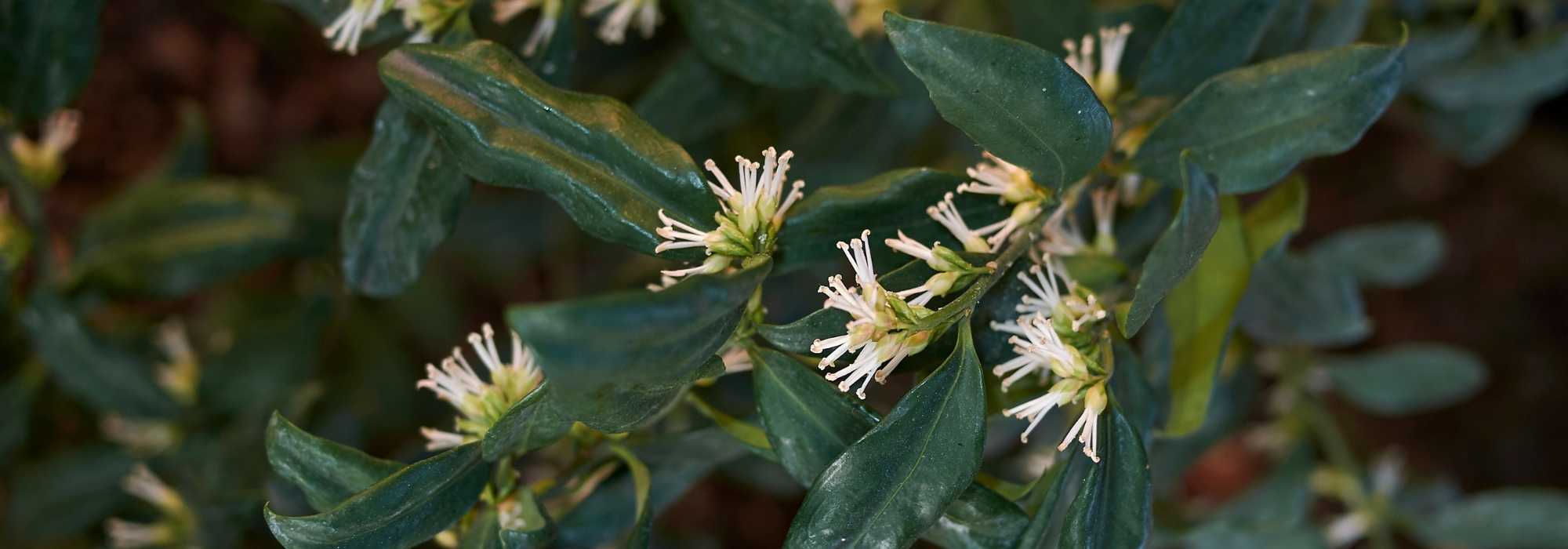
Sarcococca: 5 companion planting ideas
To showcase this evergreen bush in your garden
Contents
Sarcococca, an odd name for a plant still fairly little used in our green spaces, proves to be a charming little evergreen shrub capable of occupying the shadiest parts of a garden.
Of Himalayan origin, it has a discreet white flowering but deliciously scented, even in the coldest part of winter when the garden lies dormant and covered in frost. Its fragrance then literally fills the garden.
Modest in size, it can occupy small spaces. You will easily find two species of interest, Sarcococca confusa and the smaller Sarcococca hookeriana.
Its foliage is a glossy green, often similar to box, the two bushes sharing the same botanical family. Of upright, arching, bushy or spreading habit, Sarcococca can be used in various configurations.
Discover how to better use and showcase this scented shrub in the garden!
In a shady border
Sarcococcas are shrubs that thrive in shade, even deep shade. Their tough, glossy foliage is particularly useful to densify a dark area of the garden that is hard to plant. They enliven shaded corners year-round, adding delicate cream inflorescences in winter. Preferring slightly acidic soil, Sarcococcas can be added as companions to a heather soil bed. In this exposure, their glossy dark green foliage needs pairing with lighter or variegated foliage, or even purple-tinged leaves, that tolerate this low-light garden situation.
In large beds, plant specimens with an upright or arching habit such as Sarcococca hookerinana, grouping them in threes, for example. Combine with evergreen bushes such as Camellias, azaleas or rhododendrons, and with springtime beauty of Chaenomeles speciosa. A few Hellebores will create a very attractive winter scene, extended into spring and summer by columbines, Geranium macrorrhizum, Ajuga reptans, etc.
In a smaller bed, choose compact, bushy varieties such as Sarcococca ruscifolia which you can pair with a Loropetalum, some azaleas, Geranium phaeum…
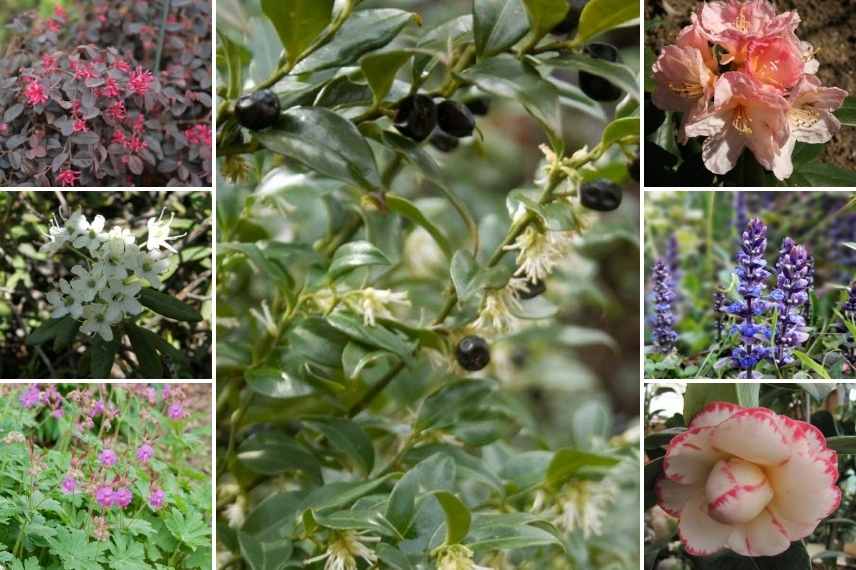
Sarcococca hookeriana (centre), Loropetalum, Ledum groendlandicum ‘Helma’, Geranium macrorrhizum, Rhododendron ‘Percy Wiseman’, Ajuga reptans, Camellia japonica ‘Margaret Davis’
Read also
Sarcococca: how to grow and prune itUnder the canopy of trees
Bushes that tolerate frequent dryness under trees, even beneath conifers, you can use Sarcococcas as an evergreen mass at the base of a tree. By mixing them with some perennials and bulbs, you will brighten and fill these often uninviting spaces, which benefit from being planted.
Use a medium-sized variety such as the cultivar Sarcococca hookeriana var humilis about 30 to 50 cm tall: it acts as a very decorative groundcover, effective because it gradually spreads.
Enhance the understorey look of this tree-base planting by adding Hellebores, lily-of-the-valley, Brunneras, Ferns, Pachysandra terminalis, a few snowdrops that will colonise the space and Cyclamen coum in tapetum.
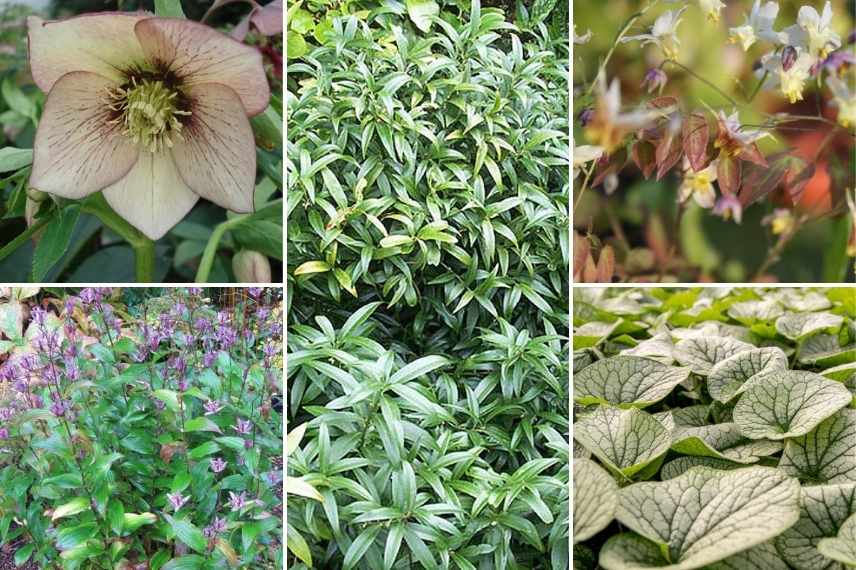
Helleborus Picotee, Tricyrtis formosana, Epimedium x versicolor ‘Cupreum’ and Brunnera macrophylla ‘Alexander’s Great’ accompany a Sarcococca hookeriana var humilis (in the centre).
Discover other Sarcococcas
View all →Available in 2 sizes
Available in 2 sizes
Available in 2 sizes
Available in 2 sizes
Available in 2 sizes
Available in 1 sizes
Available in 1 sizes
Available in 1 sizes
Available in 1 sizes
Available in 1 sizes
Path edging
Evergreen foliage, medium height and upright or spreading habit of Sarcococcas make them interesting shrubs for edging a path or walkway. All the more as they require very low maintenance, especially pruning, due to their slow growth.
For a low form, choose Sarcococca hookeriana var humilis, very modest indeed in its reduced proportions (60cm x 80cm): its low spreading habit makes it an excellent subject for a small border in glossy green. It stands well on its own and produces an interesting visual effect when planted in a linear fashion along a path. It can also be paired with some boxwood clipped by alternating them, which will produce a classic and fairly streamlined style, and crenate holly, with dense, compact habit.
You can also pair it with other small-growing evergreen bushes such as Skimmia japonica ‘Magic Marlot’ which will bring a cream-pink colouring in spring, and lots of softness with its variegated foliage.
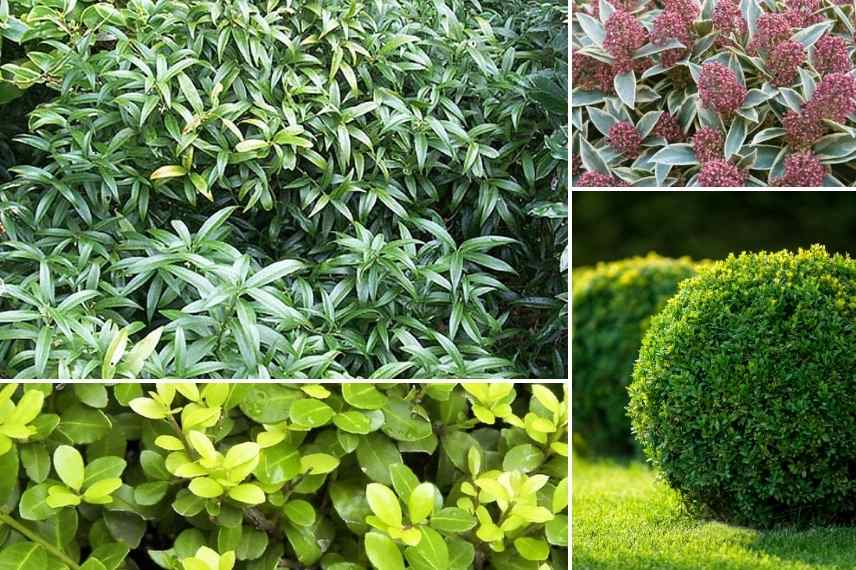
A low border composed of Sarcococca hookerina humilis (top left), Skimmia japonica ‘Magic Marlot’, Ilex creanata ‘Blondie’ and boxwood
For a larger border on a path with less conventional style in more natural semi-shaded areas, choose a variety with an erect habit, such as Sarcococca hookeriana var digyna or Sarcococca confusa. Measuring between 80cm and 1.50m high respectively, they will pair perfectly with variegated or golden evergreen euonymus to bring light, or with some grasses or pliant perennials.
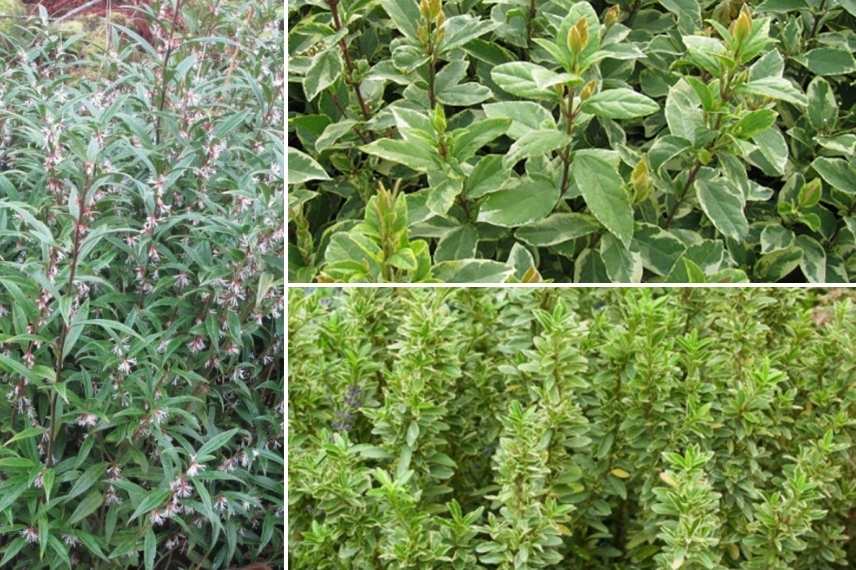
Sarcococca hookeriana var digyna (left), Viburnum tinus Variegatum and Euonymous japonicus Microphylus Variegatus
Potted in a winter arrangement
Several low-growing Sarcococcas cultivars, perfect for filling a container in a small garden or patio facing north. When used in winter container compositions, they will also create a very attractive display on terrace or balcony throughout winter. Placed at house entrance or along a path to house, your container will be ideally located so you can enjoy its lemon-scented fragrance for several weeks. You can always replant it later in garden if you wish!
Sarcococca hookeriana var. humilis, of compact proportions (60 cm high and 80 cm wide), and Sarcococca ‘Winter Gem’ are perfect for this use. With their glossy green foliage, they will provide year-round interest and can be paired with other compact bushes tolerant of shade and suitable for container planting, such as Camellia sasanqua ‘Waterfall Pink’ or dwarf Acers.
In a winter composition in a slightly larger container, simply pair them with a creeping ivy (such as Hedera helix ‘Kolibri’) or a Muehlenbeckia that will trail nicely down the container, a few violets or spring bulbs (scillas, muscari, Erythroniums): they will be enough to bring plenty of charm and a natural look to your terrace!
> Discover our selection of dwarf bushes to grow in pots on a north-facing balcony and Growing Sarcococca in a pot
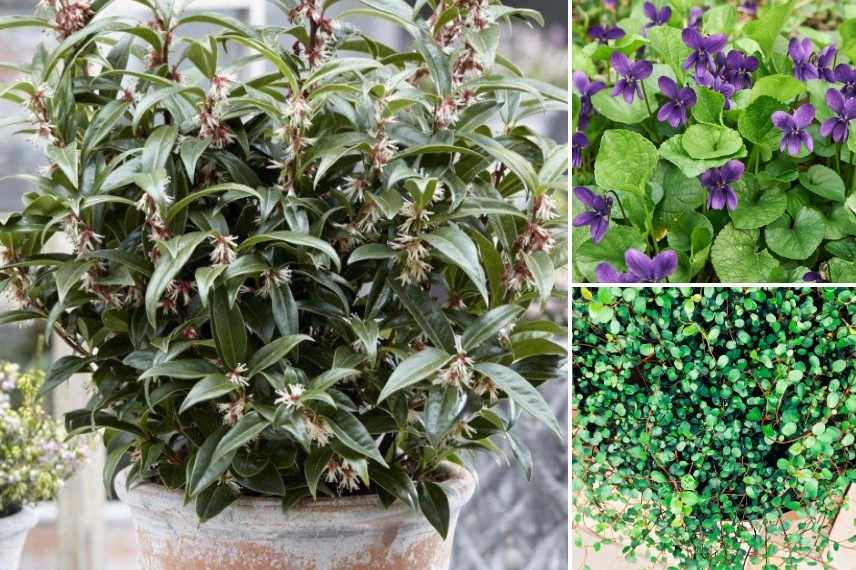
Sarcococca ‘Winter Gem’, Viola odorata and Muehlenbeckia
Star of a fragrant border
Scented character of Sarcococcas can also be an opportunity to create a flower border with fragrant flowering that will follow one another through the seasons. Positioned close to a house entrance, this border will kick off the fragrances in January, with notes of jasmine and lemon, and will continue to enchant you all year round. For this type of scented border, just take care not to let the delightful effluvia from bushes, small trees or perennials compete too much.
Scents are often incredible in winter, but you can easily extend them into summer by playing with successive flowering.
Whiteness of Sarcococca flowering also allows it to be paired with many colours. It’s up to you to compose a scented scene in soft or bolder tones, with shade or semi-shade plants (the latter aspect allowing more freedom). If this border is located close to the house or against a wall, don’t hesitate to pair it with a climbing plant.
Reddish stems of Sarcococca hookeriana ‘Purple Stem’ blend particularly well with the coloured wood of shrubby Cornus such as Cornus sericea ‘Kelseyi’, which you can insert into this border for an even more colourful winter!
Some examples in order of scent appearance: Camellia ‘High Fragrance’ from February to April, Daphne mezereum between February and March, Rhododendron fragrantissimum between March and April, Skimmia japonica ‘Fragrant Cloud’ and Choisya ‘Apple Blossom’ in April–May (the latter perpetual, flowering again in September), Eriostemon myoporoides in spring and autumn, Itea virginica scentlandia in June and July, Trachelospermum jasminoides throughout summer, etc.
Also consider Osmanthus, Drimys lanceolata, Hyacinthus ‘Blue Jacket’, lily-of-the-valley, Ornithogales, clematis… It’s really a matter of choice and plant palette.
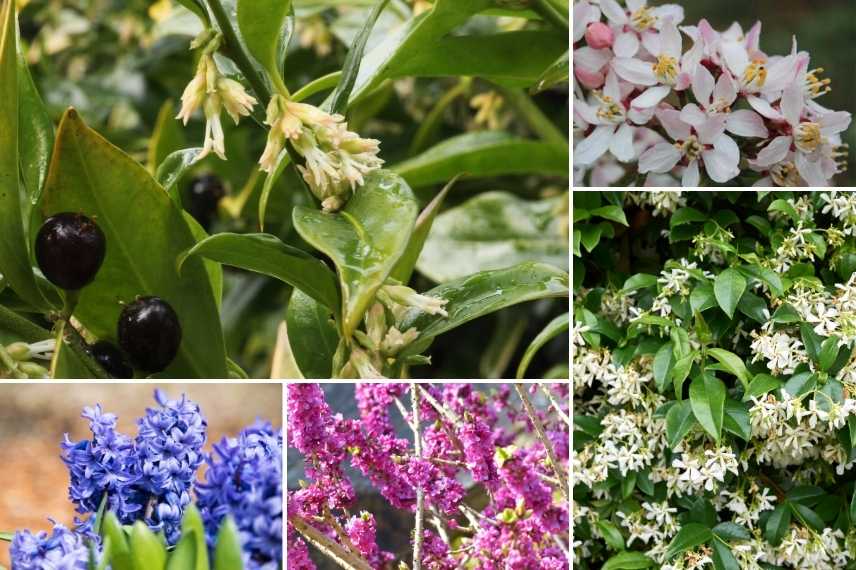
A scented border, with seasonal order of appearance: Sarcococca confusa, hyacinths, Daphne mezereum, Choisya ‘Apple Blossom’ and in summer Trachelospermum jasminoides
- Subscribe!
- Contents
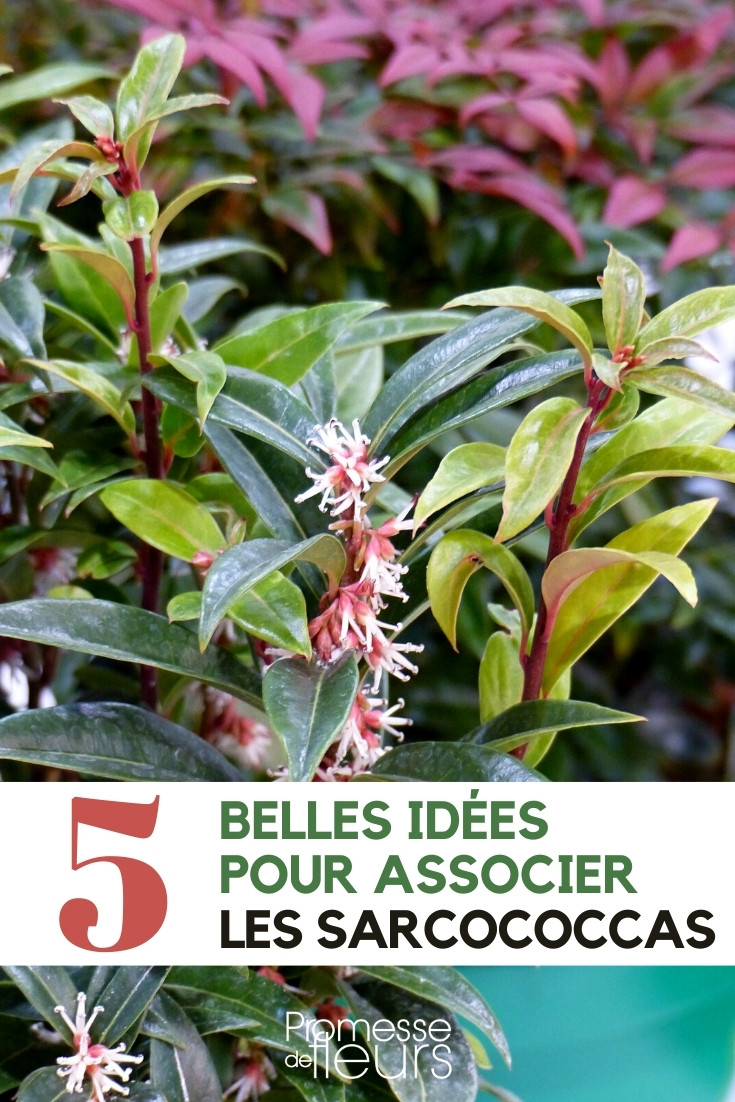































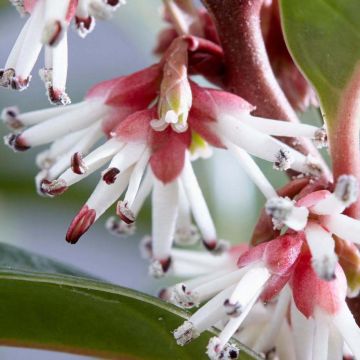
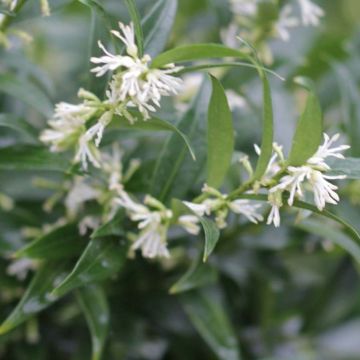
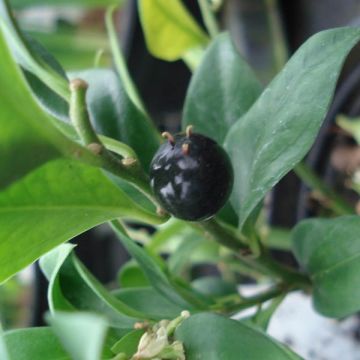
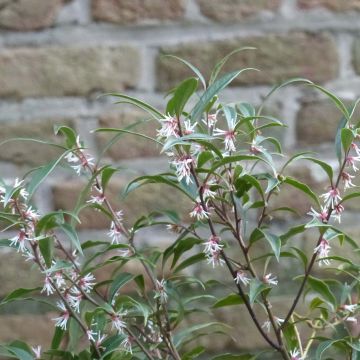
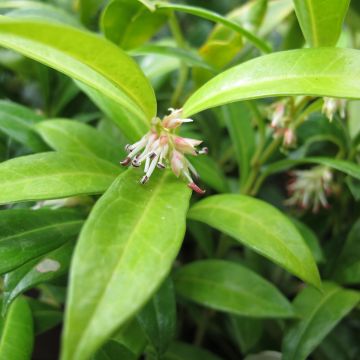
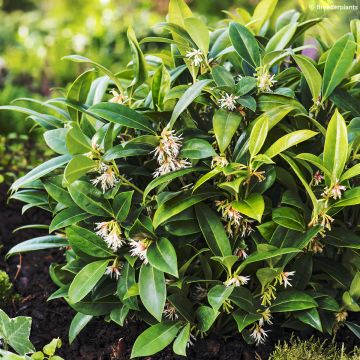
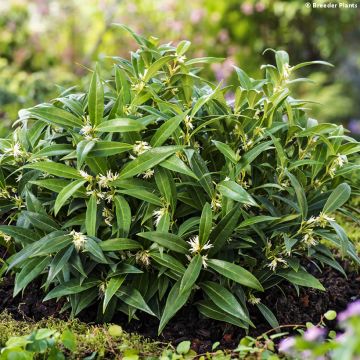

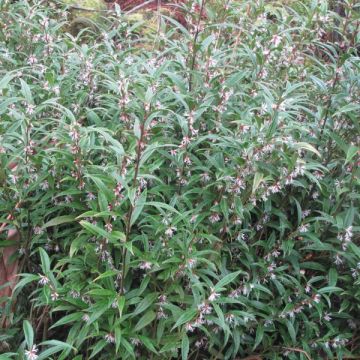
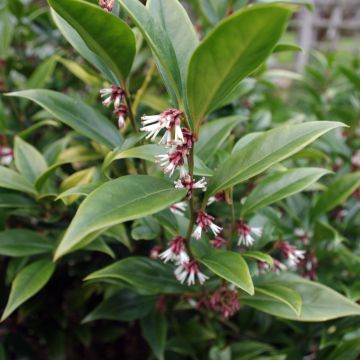
Comments